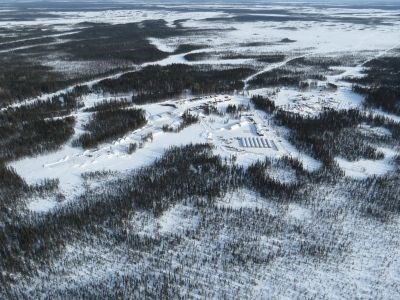Ontario’s Ministry of Northern Development and Mines has come under harsh, across-the-board, criticism by the provincial auditor general for its ineffectiveness and inaction in making any progress in the Ring of Fire and in promoting Ontario’s mineral resources.
The auditor general’s annual review of the government’s mines and minerals program found a ministry that has fallen short in encouraging mineral development, ensuring regulatory compliance, and supporting sustainable and responsible exploration.
Ontario’s mining industry comprises almost a quarter of Canada’s total mineral production, worth almost $11 billion in 2014.
But exploration spending has dropped precipitously from a high of more than $1 billion in 2011 to $507 million in 2014. The number of active mining claims in 2014 was 235,000 units, a decline of 363,000 units in 2008.
While the Ontario government attributes the slow-down in exploration to the drop in global mineral commodity prices, the auditor general determined that the ministry “has not been effective in encouraging timely mineral development in the province.”
While the provincial government once described the Ring of Fire chromite discoveries in 2008 as the “discovery of the century,” an opportunity which could provide multi-generational employment opportunities with considerable wealth generation for the province and country, the auditor general found no evidence of a “detailed plan or timeline for developing the region.”
This despite the province setting up the bureaucracy of a Ring of Fire Secretariat in 2010 to co-ordinate all activities surrounding this potential mining camp, establishing a Ring of Fire Development Corporation in 2014, and creating a Regional Framework Agreement process to negotiate with Aboriginal communities on how Far North development should proceed.
The province promised to spend $1 billion to provide mining-related infrastructure but none of that money has been spent, the auditor general found, while Queen’s Park waits on matching infrastructure dollars from Ottawa.
And the billion-dollar commitment “was not based on a detailed assessment of the region’s infrastructure needs.”
The proof, the auditor general said, is in the lack of activity.
No minerals have been extracted and a major international mining company – Cliffs Natural Resources – pulled out and sold the rights on its chromite deposits to a junior mining company – Noront Resources – which “has no current plans to develop those chromite holdings.”
The auditor general questioned the performance of the Ring of Fire Secretariat, the government entity created in 2010, to work with industry and prepare local Aboriginal communities for mining with training, education and capacity-building support dollars.
“We noted that the Secretariat has continuously missed milestones established by the government for the development of the Ring of Fire,” the report said.
The Secretariat has offices in Sudbury, Toronto and Thunder Bay with a staff of 19 and has spent $13.2 million over the last five years.
Originally, development in the Ring was scheduled to commence in 2015, but mining can’t proceed until regional land-use planning is completed by the Ministry of Natural Resources and Forestry. That process was supposed to be finished this year, but appears to be delayed another two years due to the length of time it’s taken to consult with area First Nations.
Similarly, regional environmental assessments under the Ministry of Environment and Climate Change were targeted for completion in late 2012, but remain “outstanding.”
The Ring of Fire Development Corporation, which was intended to bring together government, the mining companies, and Aboriginal leadership, has not engaged any of these stakeholders but still maintains a board of directors of five senior bureaucrats. The corporation is not even operational.
The Regional Framework Agreement, designed to establish a protocol with Aboriginal communities to participate in development, has cost $6.9 million as of last March. A second round of negotiations has started but there’s no set date on when this process will finish.
The report also outlined there’s a lack of a paper trail on how $16 million in “capacity building” funds transferred to the nine communities in the Matawa First Nations have been spent.
These transfer payments are distributed by the Ring of Fire Secretariat.
Regular reports are not submitted and there’s “little supporting documentation to show whether the funds were spent according to the transfer-payment agreements.”
The auditor general also pointed out the “lack of clarity” in Ontario’s regulations on the duty to consult with First Nations on mining projects, which has stymied investment.
The government chose to delegate the consultation responsibility over to the mining industry to provide Aboriginal communities with information on potential mining impacts and address any of their concerns.
Industry groups told the auditor general that assigning this role to the mining sector “can discourage investments” due to the high cost of travelling to remote communities, and because it’s impossible to determine the length of time to do consultation or the outcome.
The ministry has also been slow in making geoscience information available to industry.
During their investigation, the auditor general discovered more than 1,250 geological assessments dating back to 2013 had not yet been made public through its online database of searchable information, a tool that helps potential investors identify opportunities for exploration.
On managing mine closure plans and rehabilitating abandoned mines, the ministry was found to lack adequate processes and funding to perform these duties.
Closure plans are not properly reviewed when submitted, nor updated on a regular basis to reflect current costs and standards.
The report said the ministry has no way of determining the effectiveness of its marketing strategies in promoting and attracting mineral investment in Ontario. Performance targets are set for making contacts and arranging meetings but no one is tracking whether these interactions bear fruit.
For its part, the Ministry of Northern Development and Mines told the auditor general it plans to “move forward” with the number of the report’s recommendations and plans to address some outstanding issues raised by industry in the provincial mining act.




